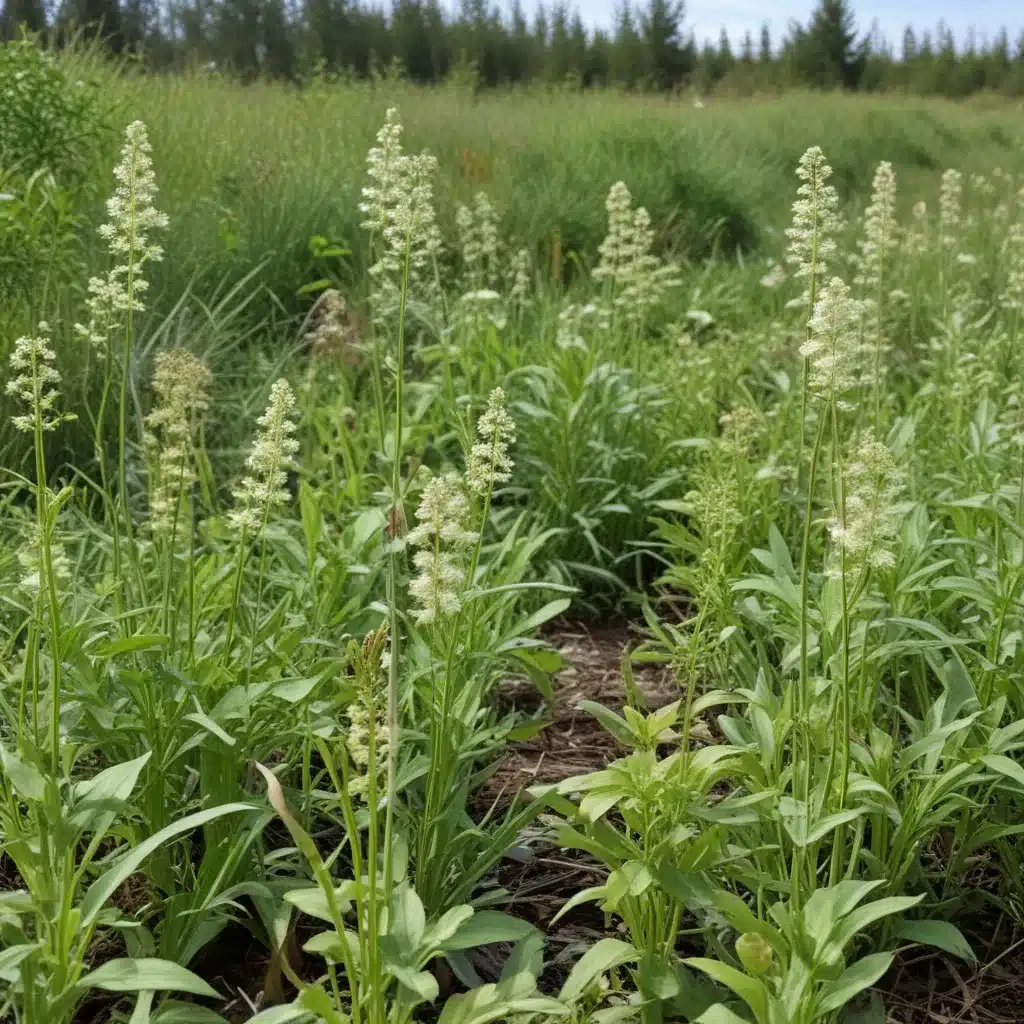
Investigating Thermomyces lanuginosus and Purpureocillium lilacinum for Bioremediation
Harnessing Fungal Potential for Effective Bioremediation
Plastic pollution has become a pressing global issue, with billions of tons of non-degradable plastic waste accumulating in our environment each year. Conventional methods of plastic disposal, such as landfilling and incineration, have proven to be ineffective and environmentally damaging. However, the field of bioremediation offers a promising solution, harnessing the remarkable capabilities of fungi to degrade and transform these persistent pollutants.
The Fungal Edge in Plastic Degradation
Fungi possess unique enzymatic systems that allow them to break down complex polymer chains found in various plastic materials. Two such fungi, Thermomyces lanuginosus and Purpureocillium lilacinum, have emerged as particularly adept at plastic bioremediation.
Thermomyces lanuginosus is a thermophilic fungus known for its ability to produce a diverse array of enzymes, including lipases, proteases, and esterases. These enzymes play a crucial role in the hydrolysis and depolymerization of synthetic polymers, such as polyethylene terephthalate (PET) and polyurethane. Studies have shown that T. lanuginosus lipase can effectively hydrolyze PET, breaking down the long polymer chains into smaller, more manageable units.
Similarly, Purpureocillium lilacinum has demonstrated remarkable potential in the bioremediation of plastic waste. This fungus is capable of producing esterases and other hydrolytic enzymes that can degrade a wide range of synthetic polymers, including poly(butylene succinate-co-adipate) and polyurethane. The versatility of P. lilacinum in degrading these materials makes it a valuable asset in addressing the global plastic pollution crisis.
Harnessing Fungal Enzymes for Bioremediation
The success of fungal bioremediation lies in the ability of these microorganisms to secrete a diverse array of enzymes that can target and break down the chemical bonds within plastic polymers. By understanding the specific enzymatic pathways involved, researchers can optimize conditions for enhanced plastic degradation.
For instance, the cutinases produced by Thermomyces lanuginosus have been shown to be particularly effective in hydrolyzing PET. These enzymes can cleave the ester bonds within the PET polymer, leading to the formation of smaller, more manageable fragments. Similarly, the lipases and esterases secreted by P. lilacinum can target the ester linkages in polyurethane and other plastic materials, facilitating their decomposition.
Beyond enzymatic degradation, fungi can also contribute to bioremediation through non-enzymatic mechanisms, such as the production of biosurfactants. These surface-active compounds can enhance the bioavailability of hydrophobic plastic compounds, making them more accessible for fungal metabolism and further degradation.
Optimizing Fungal Bioremediation Strategies
To effectively harness the potential of Thermomyces lanuginosus and Purpureocillium lilacinum in bioremediation, researchers have explored various strategies to optimize their performance.
One approach is to investigate the environmental factors that influence fungal growth and enzyme production, such as temperature, pH, nutrient availability, and the presence of co-substrates. By fine-tuning these parameters, researchers can create conditions that maximize the fungal degradation of specific plastic polymers.
Another strategy is to explore the use of mixed fungal cultures or consortia, where different species collaborate to break down complex plastic structures. The synergistic effects of various enzymatic activities and metabolic pathways can lead to enhanced plastic degradation rates and more complete mineralization of the pollutants.
Genetic and metabolic engineering techniques have also been employed to further enhance the bioremediation capabilities of these fungi. By modifying or introducing specific genes responsible for enzyme production, researchers can develop strains with improved plastic-degrading abilities, increased tolerance to environmental stressors, or the ability to utilize a broader range of plastic substrates.
Integrating Fungal Bioremediation into Waste Management
As the field of fungal bioremediation continues to evolve, there is a growing recognition of the need to integrate these innovative approaches into comprehensive waste management strategies. By combining fungal-based methods with other waste treatment technologies, such as mechanical sorting, thermal processing, and anaerobic digestion, a more holistic and sustainable solution to the plastic pollution crisis can be achieved.
For instance, the initial mechanical or thermal pre-treatment of plastic waste could help to increase the surface area and accessibility of the polymers, making them more susceptible to fungal degradation. The resulting breakdown products, such as monomers or oligomers, could then be further processed through microbial fermentation or chemical transformations to produce valuable end-products, such as biofuels or bio-based chemicals.
Furthermore, the integration of fungal bioremediation into waste management systems could create new economic opportunities, transforming plastic waste from a burden to a valuable resource. The recovered materials and by-products generated through this process could be reintroduced into the circular economy, reducing the reliance on virgin plastic production and minimizing the environmental impact of plastic pollution.
The Future of Fungal Bioremediation
As the global community continues to grapple with the pressing issue of plastic pollution, the role of fungi in bioremediation has become increasingly crucial. The remarkable capabilities of Thermomyces lanuginosus and Purpureocillium lilacinum in degrading a wide range of synthetic polymers offer a promising path forward, providing a sustainable and environmentally friendly solution to this complex challenge.
By leveraging the power of these fungal species and optimizing their bioremediation strategies, we can work towards a future where plastic waste is no longer a burden, but rather a valuable resource that can be transformed and reintegrated into the circular economy. Through ongoing research, innovation, and the integration of fungal bioremediation into comprehensive waste management systems, we can take a significant step towards a more sustainable and resilient future.
To learn more about the latest advancements in fungal bioremediation and how you can incorporate these techniques into your construction or renovation projects, visit https://localbuilderlondon.co.uk/. Our team of experienced professionals is dedicated to providing practical, sustainable solutions that protect the environment and promote a circular economy.


